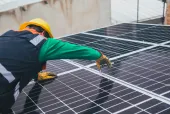The price of electricity in Vietnam
By Nguyen Huu HoaiThe electricity industry in Vietnam is unique. The Government still controls large components of the industry. Critically, it controls the price. This Article discusses the general pricing regime.
Development of a competitive market
The Vietnam Electricity Group (“EVN”) is a stated-owned enterprise. It controls the entire process: importation of electricity, generation, transmission, distribution, allocation and retailing of electricity. EVN has a statutory monopoly on wholesale and retail distribution. EVN has an obvious advantage over other players. This advantage enables EVN to control both the price at which power plants sell electricity and the wholesale and retail prices which consumers pay.
To develop a competitive market, the Government’s plan is to develop the electricity market through three periods: (i) Phase 1 (2005-2014)–competitive market for the generation of electricity (“CMFGOE”); (ii) Phase 2 (2015-2022)–competitive market for the wholesale sale of electricity; and (iii) Phase 3 (From 2022 onward)–competitive market for retail sale of electricity. The first phase is new and was initiated on July 1, 2012--seven years behind the planned schedule.
Under the CMFGOE regime, both EVN plants and non-EVN plants, are permitted to sell their electricity to EVN on the basis of competitive bids through an electronic bidding system.
Electricity price
The viability of a power plant depends on the price at which it can sell its output. However, the price at which power plants sell electricity to EVN has a ceiling fixed by the Electricity Regulatory Authority of Vietnam (“ERAV”). The ceiling price
may be adjusted by ERAV on an annual basis.
A shortage of electricity exists
The Government realizes that to attract domestic and foreign investment, the price of electricity must increase. According to the Government’s master plan, the price at which a plant may sell electricity will be gradually increased in order to ensure that the selling price will be 8-9 cents per kilowatt-hour in 2020.
The price increase will not follow a fixed schedule. Adjustments will be decided from time to time. It is unclear whether the proposed price will be sufficient by 2020. The cost of fuel to operate power plants has consistently increased.
On the other side of the equation, the law permits EVN to adjust its retail price four times a year if the variation of the main input factors (i.e. fuel, exchange rate, and structure of
volume of power generation) exceeds 5% in comparison with the previous adjustment period. Even so, EVN must justify any increase and must obtain the consent of the Ministry of Industry and Trade (in case the increase of retail price is less than 5%), and/or the Ministry of Finance (in case the increase of retail price is more than 5%). A reduction of the retail price does not require the Government’s approval.
CMFGOE
The impact of CMFGOE, at least at present, is marginal. Large EVN-power plants do not participate in CMFGOE. In fact, only a small amount of the power currently generated involves CMFGOE. Although the law requires all power plants with a capacity of more than 30 MW (with a few exceptions2) to participate in CMFGOE, to date only 29 power plants with a total capacity of 9,035 MW do so.
At present, only about 5%-10% of the total power generation of these 29 plants (less than 1,000 MW) is subject to the competitive bid regime. The remaining production of these plants (95%-90%) sells at the price set out in the plants’ existing power purchase agreements with EVN.
As CMFGOE has operated for only a few weeks, it is too early to know if it will succeed. Much depends on the Government’s will to challenge a deeply engrained resistance to change. If it does succeed, and it is far too early to tell, it will be a small but solid step toward development of a truly competitive market.
BOT, wind and geothermal plants are not required to participate in CMFGOE.














 Advertise
Advertise











